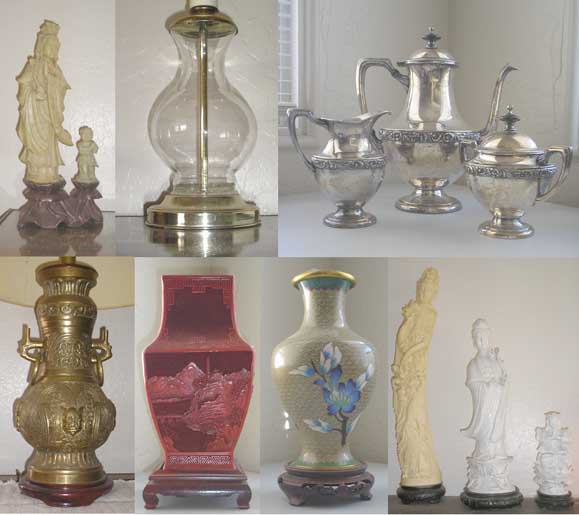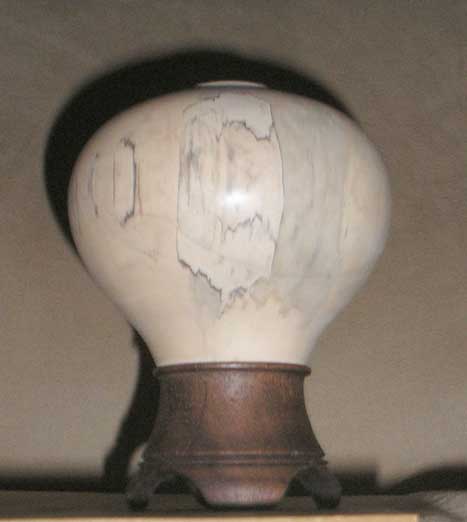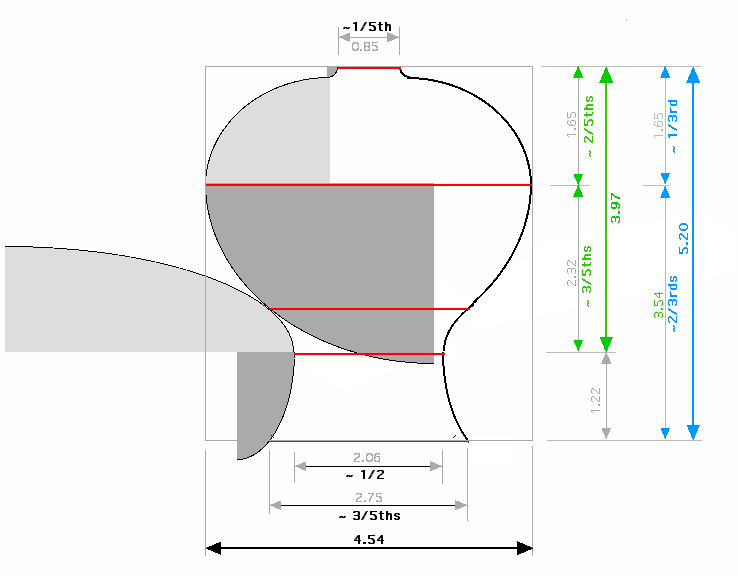In other mediums - metal, stone and glass - vases often have a separate base to lift the piece off the surface - a stage on which to present the piece - and the base is often turned wood. Here are some examples of non-wood pieces around the house that use a base.

Oddly, for turned vases and hollow forms it's a small foot rather than a separate base that is used for the piece to stand on - and not fall over. And for some turned forms, like "calabash bowls" the bottom of the piece is round and the piece balances precariously, often not quite upright.
So I decided to explore the use of a "base" for woodturning, starting with "What is it role?".
It could be used merely to provide stability to the main piece, a less common form of a "foot".
It could a pedestal to present the piece - elevating it - as other types of sculptures often are.
It could be a stage - defining a space clearly apart from its surrounding - on which the piece can perform.
It could be a place to hide something - a small music box mechanism, an internal light source with battery and switch, a secret treasure that only those willing to pick up the piece and examine it will ever see.
Then there's the question of Integrate It To Form A Whole - or - Make It Distinctly Different And Separate?
What about proportions? There are severals sets of rules/guidelines for common types of turnings - plates, bowls, hollow forms, etc. - like The Rule of Thirds or The Rule of Fifths. There is The Rule of Fair Curves that dictate that curves must intersect each other at tangent points to both curves in order to create an Uniterrupted Visual Flow of the profile of the piece.
This Base Thing is going to take some thought - and a bit of planning. That would come later - I wanted to jump in and make something - with a base.
And here's the result of my first attempt at a With Base piece - a variation of a hollow form out of dry spalted birch and a dry claro walnut base. The lighter birch was chosen for the hollow form because light colors seem lighter than dark colors - and I was after a rising bubble look - the hollow form rising out of the base. The darker walnut for the base would exploit the darker, more grounded feeling - an anchor for the hollow form.
(Apologies for the image quality - it's a Quick & Dirty photo I took when I put the two pieces together and the shot was done using the camera's flash.)
If you examine the photo you'll see that the hollow form has a relatively large "foot" and an additional reverse curve that is usually much more subtle in a traditional hollow form of this type. You'll also notice that I made an attempt to carry the reverse curve at the bottom of the hollow form down into the base and having another reverse curce in the opposite direction so that the curves of the profile of the whole - hollow form plus base - would flow, the bead at the top of the base being at the tangent point of the two curves.
(technique note: the "arches" between the "feet" were created with an oscillating spingle sander - a quick and easy way to remove wood for curves. I left the remaining "feet" intentionally a bit wide, since it's easier to remove more wood than it is to put wood back on a piece. I intend to make the "feet" thinner/narrower.)

